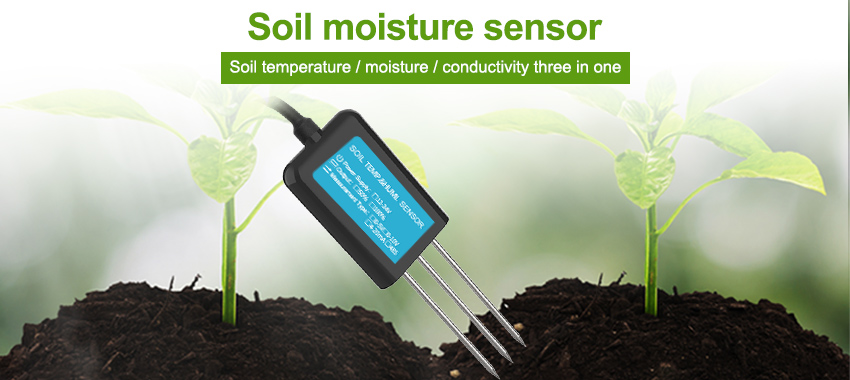Summary:
Soil moisture sensor is a kind of soil testing instrument used to measure soil moisture content. This makes it ideal for conducting experiments in courses such as soil science, agricultural science, environmental science, horticulture, botany and biology. Use the Soil Moisture Sensor to:
Measure the loss of moisture over time due to evaporation and plant uptake.
Evaluate optimum soil moisture contents for various species of plants.
Monitor soil moisture content to control irrigation in greenhouses.
Enhance your Bottle Biology™ experiments.

Note: Vernier products are designed for educational use. Our products are not designed nor are they recommended for any industrial, medical, or commercial process such as life support, patient diagnosis, control of a manufacturing process, or industrial testing of any kind.
Getting Started
Connect the sensor to the interface.
Start the appropriate data-collection software,if not already running, and choose New from File menu.
Using the Product
The horizontal orientation of the soil sensor ensures the measurement is made at a particular soil depth. The entire sensor can be placed vertically, but because soil moisture often varies by depth, this is not usually the desired orientation. To position the sensor, use a thin implement such as a trenching shovel to make the pilot hole in the soil. Place the sensor into the hole, making sure the entire length of the sensor is covered. Press down on the soil along either side of the sensor with your fingers. Continue to compact the soil around the sensor by pressing down on the soil with your fingers until you have made at least five passes along the sensor. This step is important, as the soil adjacent to the sensor surface has the strongest influence on the sensor readings.
Removing the Sensor
When removing the sensor from the soil, do not pull it out of the soil by the cable. Doing so may break internal connections and make the sensor unusable.
What is Volumetric Water Content?
In very simplified terms, dry soil is made up of solid material and air pockets, called pore spaces. A typical volumetric ratio would be 55% solid material and 45% pore space. As water is added to the soil, the pore spaces begin to fill with water. Soil that seems damp to the touch might now have 55% minerals, 35% pore space and 10% water. This would be an example of 10% volumetric water content. The maximum water content in this scenario is 45% because at that value, all the available pore space has been filled with water. This soil is referred to as being saturated, because at 45% volumetric water content, the soil can hold no more water.